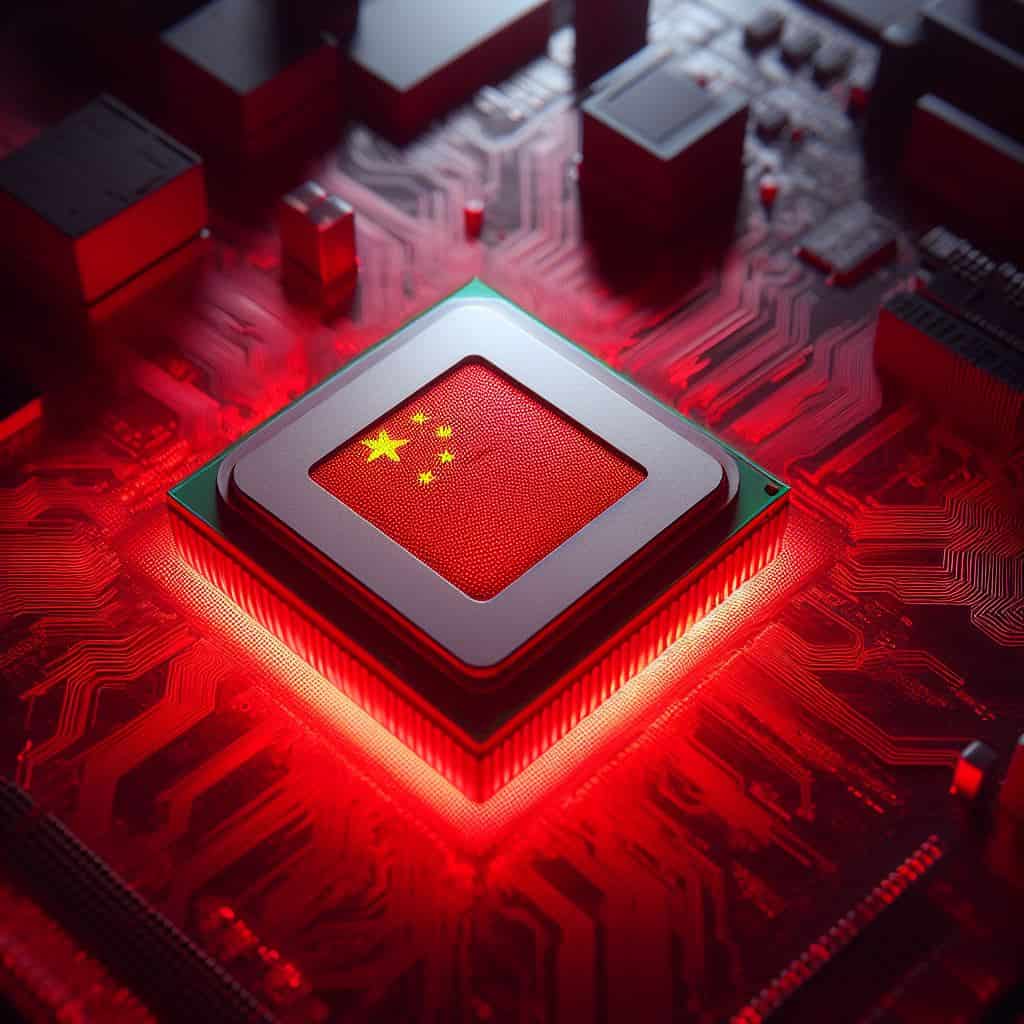
China’s semiconductor industry shifts gears in response to stringent US export controls, aiming to create a self-sufficient production landscape. The Biden administration’s measures have significantly curtailed China’s access to advanced technologies, compelling Beijing to foster domestic innovation. Leading Chinese firms maintain access to select Western equipment for cutting-edge semiconductor production, but the nation is doubling down on developing indigenous toolmakers to bypass Western dependencies.
This strategic pivot is spearheaded by industry giants like Huawei, which is forging public-private partnerships to accelerate homegrown R&D. Despite the arrests of prominent fund executives and industry uncertainty, China persists in its ambitious goal to establish production lines free from Western influence, with significant advancements reported in domestic lithography efforts. The Chinese semiconductor scene is poised for a transformative leap, potentially reshaping global tech dynamics.
In the realm of global semiconductor manufacturing, a tectonic shift is underway. The Chinese semiconductor industry, once heavily reliant on Western technology, is now navigating through the turbulent waters of stringent US export controls. These measures are reshaping the industry’s approach to innovation and independence. At the heart of this transformation is a commitment to developing domestic capabilities that could eventually render Western technologies obsolete within China’s production lines.
U.S. export controls ignite China’s drive for autonomy
The Biden administration’s export controls, introduced in October 2022, were a watershed moment for the Chinese semiconductor landscape. By targeting advanced semiconductors and the equipment used in their manufacture, the US sought to thwart China’s progression into cutting-edge nonplanar technology processes like FinFET and GAA. The controls necessitated an urgent and strategic pivot: China had to accelerate its domestic toolmaking and manufacturing capabilities or risk falling behind in the global semiconductor arms race.
China’s strategic response to U.S. pressure
Chinese companies, aware of the long-term risks posed by reliance on Western technology, prioritize developing tool and material production lines devoid of Western inputs. This endeavor is ambitious, starting from processes at 40 nanometers and advancing towards the more challenging 7-nanometer threshold. Against the backdrop of these export controls, firms like SMIC, YMTC, and CXMT are systematically collaborating with domestic toolmakers to establish production processes that are less vulnerable to international policy shifts.
Beijing’s strategy to overcome these obstacles involves a novel approach to public-private collaboration. The government has worked closely with the private sector to transfer advanced state-backed R&D to designated companies. This partnership is pivotal to China’s response to the “Sullivan Doctrine,” which underscores the US intention to maintain an absolute lead over China in sectors deemed critical to national security.
Despite the adversities, China’s efforts to build domestic alternatives in the semiconductor manufacturing industry are noteworthy. The industry is making strides in design tools, advanced materials, and packaging techniques, all of which are essential to semiconductor production. Huawei, in particular, has emerged as a key player, driving China’s Semiconductor Industry Policy 3.0 with its advanced node process developments and investment across the supply chain.
U.S. and allied nations align on export controls
The unilateral nature of the initial US controls prompted extensive dialogue with other key countries in the semiconductor supply chain, namely Japan and the Netherlands. These discussions culminated in a tentative agreement in early 2023, with both governments implementing similar end-use controls. The impact of these controls on companies like SMIC and the broader Chinese semiconductor industry cannot be overstated. They have mobilized firms to transition away from US technology, a move fraught with challenges but one that could redefine China’s industry in the long term.

Private sector drives policy and progress
The National IC Investment Fund’s turbulence, marked by arrests of high-profile executives, has not deterred Beijing from doubling down on its support for the industry. Rumors of a 1 trillion renminbi fund to bolster the sector have circulated, but confirmation remains elusive. Instead, the government has launched a new top-down strategy, the “China Semiconductor Industry Policy 3.0,” focusing on investing in basic R&D and fostering open-sourced hardware architectures such as RISC-V. Huawei’s integral role in this strategy underscores the importance of private sector involvement in achieving China’s semiconductor ambitions.
SMIC, China’s semiconductor manufacturing titan, is at the forefront of the nation’s push towards self-reliance. With Huawei as a significant partner, SMIC has developed close relationships focused on advancing process nodes. The Mate 60, a product of this collaboration, represents a major breakthrough in design and manufacturing, signalling China’s determination to reach the cutting edge of semiconductor technology.

Challenges and advancements in domestic production
However, China’s quest for semiconductor independence is not without its challenges. While there is no public acknowledgment from SMIC and other firms regarding their progress, industry insiders suggest aggressive timelines are being met. Lively discussions in Chinese-language semiconductor industry forums bolster this assertion. The focus is on developing key technologies, including EDA tools, lithography, etching and deposition, materials, and advanced packaging technologies, all crucial components of a robust semiconductor ecosystem.
Notably, SMEE’s development of a 28-nanometer DUV immersion lithography tool, potentially commercial in scope, indicates significant progress. This achievement, backed by major Chinese megaprojects and crucial collaborations with companies like Huawei, marks a major step forward in China’s semiconductor self-reliance.
International dynamics and market implications
While China forges ahead, international giants like ASML face the headwinds of geopolitical tensions. The Dutch firm, a linchpin in the global semiconductor supply chain, has seen its sales to China threatened by US and Dutch export controls. In 2023, despite a slowdown in orders from many chip makers, China became ASML’s second-largest market, accounting for 26.3% of sales. This underscores China’s importance to ASML and the potential impact of continued restrictions on the company’s business.
Despite the complexity and enormity of the challenges, China’s semiconductor industry is poised for a significant transformation. The nation’s efforts to leapfrog ASML in semiconductor technology are ambitious, with the potential to disrupt the industry’s supply chain dynamics. ASML’s role as the world’s largest producer of photolithography machines remains crucial, but Chinese firms are determined to close the technological gap.







